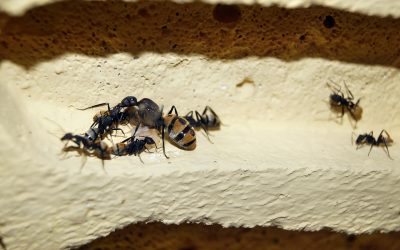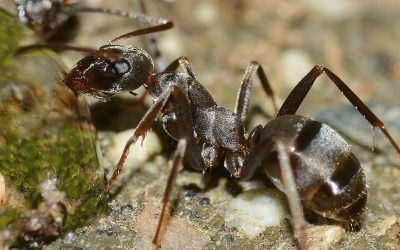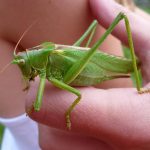Ladybirds, also known as ladybugs or lady beetles, are beloved insects that are commonly found in gardens, parks, and forests. With their brightly colored shells and distinctive spots, ladybirds are a favourite of children and adults alike. Finding ladybirds in the wild can be a fun and rewarding experience, and it is a great way to learn more about these fascinating creatures. Whether you are a seasoned entomologist or just someone who enjoys spending time outdoors, there are a few tips that can help you to find ladybirds and observe their behavior in their natural habitats. By following these tips, you can increase your chances of spotting these amazing insects and gain a deeper appreciation for the natural world around us.
What is a ladybird?

A ladybird is a small flying beetle that belongs to the Coccinellidae family. They are useful at controlling pest populations as they feed on insects like aphids and other small insects. Ladybirds will seek out aphid nests and lay their eggs in the nest so that the young will have an immediate food source.
The ladybirds that we know and love are usually bright red with black spots; however, some are black and yellow, white and brown, and you can even find stripey ones if you are lucky. There are around 40 species here in the UK, but we usually only see the two and seven-spot ladybirds.
Ladybirds are brightly coloured to warn off predators who will try to eat them; they also have a special ability to produce a pungent liquid to warn off other predators, including people. They hibernate during the winter months and can usually be found snuggled up in leaf litter, cracks and crevices. When April comes around, they will emerge on the hunt to find a mate.
Ladybird eggs hatch in a relatively short time, depending on the weather temperatures, it is usually within about 4-10 days, and the cycle continues.

The life cycle of a ladybird
The lifecycle of a ladybird is similar to that of a butterfly; it has four stages:
- Egg – a Ladybird will lay eggs one or more times a year. They lay around
- 40 eggs each time. The eggs are yellow or orange and will hatch within about 4-10 days.
- Larva – The larvae vary in colour and markings. They are usually grey with mottled spots, but they can also be yellow, buff or brown. A larva sheds its skin about four times during a 3-6 week period, before attaching itself to a leaf or stem and becoming a pupa.
- Pupa The sleepy stage usually lasts about two weeks.
- Ladybird – A newly emerged ladybird is bright yellow. Over the next few hours, its wing casing will harden developing the distinctive red and black colour we recognise.

Life span of a ladybird
The lifespan of a ladybird can vary depending on the species and environmental factors. On average, ladybirds live for about one year, but some species can live up to three years. Ladybirds go through a complete metamorphosis, which includes four stages: egg, larva, pupa, and adult. The time it takes for a ladybird to complete this cycle also varies by species and environmental conditions. Ladybirds can live longer in warm climates with plenty of food and shelter. However, they may have a shorter lifespan in harsh environments with limited resources.

Planting for Ladybirds
The number one thing that will help to attract ladybirds to your garden is food. Ladybirds eat insect pests and pollen. If you provide both, ladybirds will quite happily live in your garden. There are several types of pollen plants that ladybugs like. The flowers on these plants tend to be white or yellow and are generally flat like little landing pads for the ladybird.
Plants alone are not enough to attract a ladybird; they will also need a food source, so leaving those aphids to live on your plants will be more than enough to attract ladybirds. If you don’t like the thought of aphids munching on your desirable plants, it may be helpful to provide some other plants that aphids are attracted to.

flowers that Ladybirds are attracted to
- Marigold Angelica
- Calendula
- Caraway
- Yarrow
- Chives
- Cosmos
- Sweet Alyssum
- Statice
- Dill Fennel
- Feverfew
- Cilantro
Plants that aphids like;
- Nasturtium (aphids favourite)
- Marigold
- Early cabbage
- Radish
Ladybird Facts

There are about 5,000 different ladybirds species, and we are all fond of them because of their colourful, spotted appearance. Still, farmers are also grateful to the ladybirds because they eat pests.
Ladybirds eat aphids and other insects that feed on crops, without them they would destroy large amounts of crops.
Another benefit of ladybirds is lay their eggs in aphid colonies so that their babies have a direct food source which means even fewer pests.
Where to find Ladybirds
The best place to look for ladybirds is where there are lots of plants. Look for plants that aphids like to feast on, where there are aphids there are usually ladybirds. Wildflowers, rotting wood, trees and shrubs can also be home to ladybirds. The best time to find ladybirds is from April onwards, up until April they will be in hibernation, which makes them difficult to find.

Important Information
When possible, avoid using insecticides and herbicides in your garden; they kill ladybirds and other essential pollinating insects. You will also encourage other insects to inhabit your garden by not using them, like bees, beetles, spiders, and butterflies.
Ensure you have a water source, placing a shallow plate should provide enough water for ladybirds and the other insects that inhabit your garden. You can place a few pebbles in the water so insects can’t drown but can still access the water.
Think about setting up some bug hotels around the garden; insects love dark places they can snuggle up.
You Might Also Like
Can You Add Workers From A Different Colony
Ants are relatively small insects. However, what they lack in size, they more than make up for in numbers.
What Are Those Small White Things That Ants Carry Around?
The small white things ants carry around are actually brood laid by queen ants. they include eggs, larvae, or pupae.
How To Start An Ant Farm
You have done some research, and you have decided that you want to start an ant farm. Well, you have come to the right place.
What Do Ants Do With Their Injured?
Ants, wasps and bees are eusocial insects that are classified as members of the order Hymenoptera. ants belong to the family Formicidae.
Do Flying Ants Bite?
Flying ants are really interesting once you learn what they do, but with swarms of flying ants flying around once a year, you might be slightly concerned about whether or not they are able to bite.















